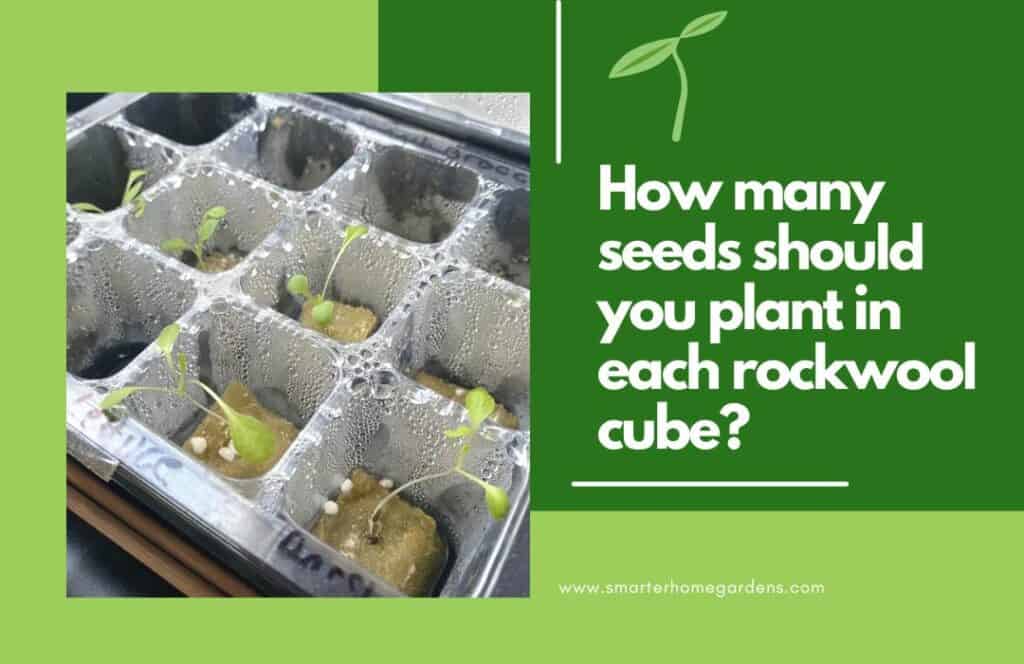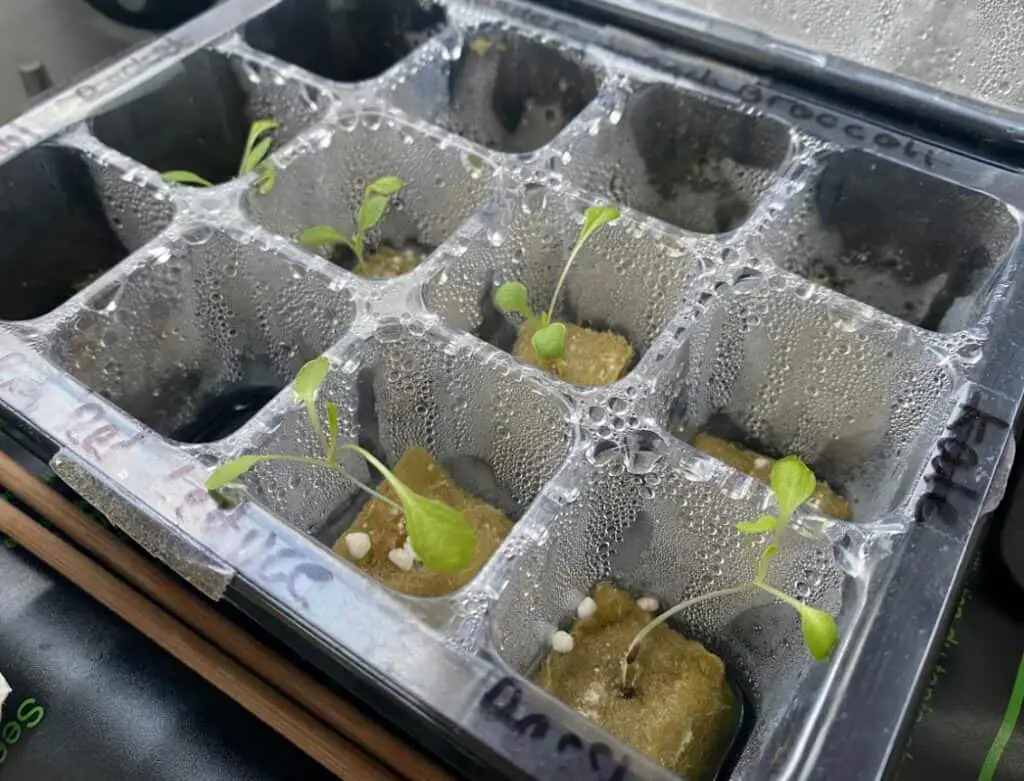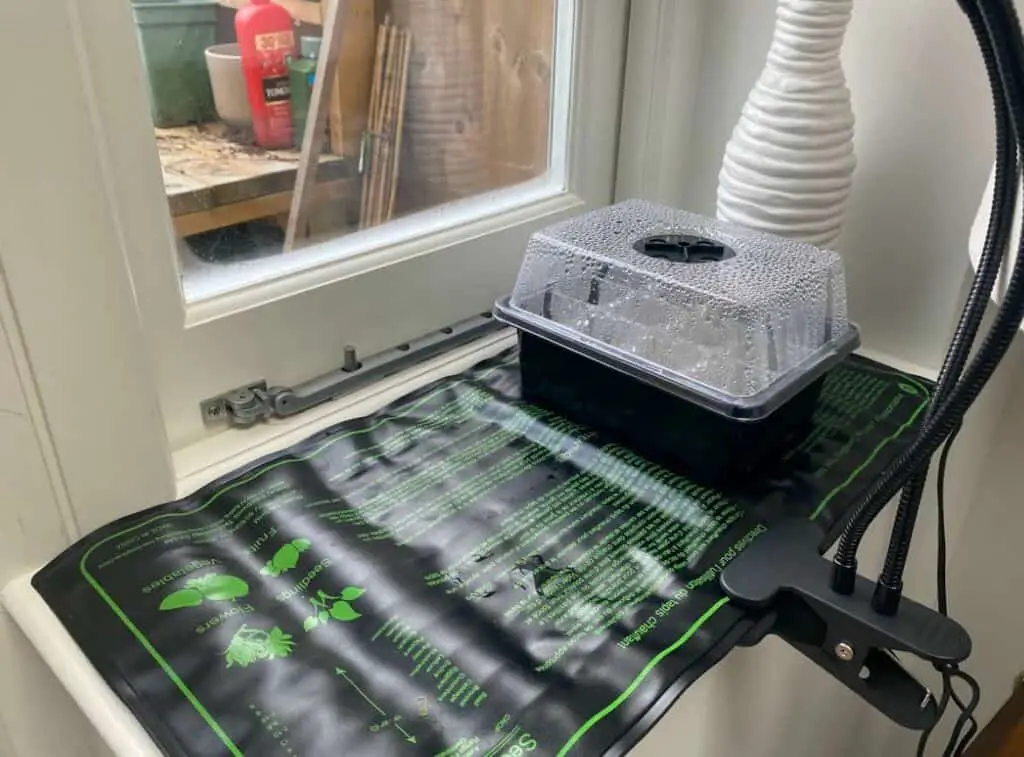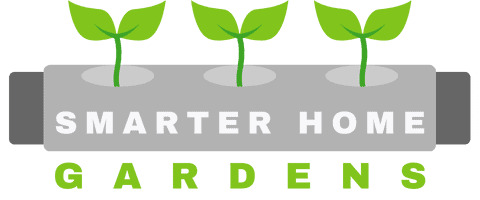This article contains affiliate links. As an Amazon Associate, SmarterHomeGardens.com earns a small commission on qualifying purchases at no extra cost to you.

My first time using rockwool wasn’t a big success. Aside from the fact that I was pretty new to hydroponics, I made an error by not planting more than one seed at a time in my rockwool grow medium. Not only did this mean that some didn’t germinate but, for some plants, it resulted in thin crops rather than thick, bushy ones. I now know planting more than one seed is key – but how many should you plant?
As a general rule, you should plant 2-3 seeds within every hold in your rockwool grow medium (or grow medium of your choice). This increases the chances of at least one seed germinating, and also results in thicker, bushier crops when growing herbs and greens like cilantro, parsley, or spinach.
In this article, I’ll share what I’ve learned from seasons’ worth of trial and error to find the optimal amount of seeds to plant in each rockwool cube to maximize germination rates and create thick, thriving plants.
How many seeds should you plant in each rockwool cube?
Before we look at my precise recommendations (which can be found in the table below), let’s first examine a few important factors to consider when planting seeds for hydroponics.
Factors to consider before deciding how many seeds to plant
1. Type of plant being grown
Before planting seeds into my rockwool cubes I always think ahead to what that seed will grow into. Different plants have different needs and some plants prefer going solo, whereas others prefer growing together in bunches.
For example, lettuce likes to grow alone into one, discreet and mature plant. Therefore, planting just 1-2 seeds in each rockwool cube makes sense so as to not overcrowd the growing environment. Conversely, parsley loves to grow in bunches. Therefore, in order to end up with a thick, juicy bunch of parsley to harvest, you should plant many seeds within the same rockwool cube.

You can always thin seedlings out. But starting with the optimal number of seeds for the plant you are trying to grow always helps to start.
2. Space available for plant growth
Considering the space available, not just within your germination trays, but within the hydroponics system you will transfer the seedlings to is also important. If you have a large system with large grow cups, you might be able to plant more seeds to create larger bunches (i.e., of parsley and cilantro). If your system is small, consider planting less to avoid overcrowding and creating too much competition for water and nutrients.
I’ve written a whole article about the different types of hydroponics systems. Check it out to assess rates suitability for your needs. There are some great diagrams too.
3. Your growing environment
Getting the conditions right for germination to take place is a critical factor, regardless of the number of seeds you plant within your growing medium. And, believe it or not, each seed type is different and requires a different combination of environmental factors before it will germinate. Do some research and understand these. And, try to germinate the same seeds together in batches under the same conditions, rather than many different seeds in the same environment.
You also want to make sure that you have the right conditions for when the seedline emerges. Usually, this means plenty of light, or your seedling will become tall and leggy.
I wrote a whole article about tall leggy seedlings and what you can do about it. Check it out if you like.
How many seeds should you plant per hole?
Given the points above, the number of seeds you should plant within each hole within your rockwool (or other growing medium) can and should vary to optimize both the rate of germination and the ultimate productivity of your plants.

In the table below, I’ve outlined my recommendations. These have been given after a couple of seasons’ worth of trial and error to get just the right amount.
| Seed | Recommended number of seeds per hole | Rationale |
|---|---|---|
| Lettuce | 1-2 | Lettuces grow best on their own and when given enough space to grow. If planting 2 seeds, ensure you thin out the weaker seedling before transferring it into your hydroponics system. |
| Cilantro (Corriander) | 6-8 | Cilantro is best grown in bunches. Therefore, adding multiple seeds increases your chances of producing a thick, bush bunch of cilantro. |
| Parsley | 6-8 | Parsley is best grown in bunches. Therefore, adding multiple seeds increases your chances of producing a thick, bush bunch of Parsley. |
| Peppers | 1-2 | Peppers grow best on their own and thrive when given enough space to expand into their growing environment. There’s no need to plant more than 1 seed per hole. |
| Chillis | 2-3 | Chilli seeds don’t have 100% germination rates and can be tricky. It’s therefore recommended to plant multiple seeds per hold, but thin out later to select only the strongest seedling. |
| Chard | 4-6 | Chard is another green crop that bunches really well. Therefore, adding multiple seeds (without thinning) per hole works really well. |
| Spinach | 4-6 | Spinach too works great in bunches. Adding 4-6 seeds helps to grow thicker plants and increase productivity. |
| Collard Greens | 3-4 | Collard green seeds are very small. It’s best to sprinkle 3-4 seeds into each hole and thin later if needed. |
| Kale | 6-8 | Like many leafy greens, Kale works great when grown in thick bunches. Therefore, planting multiple seeds into each hold is key for maximizing results. |
Following this table should act as a strong guide, but I would also encourage you to experiment and try out different combinations yourself.
Tips for increasing hydroponic germination rates
Germination can be tricky. I have spent many head-scratching months wondering just why my seeds weren’t germinating, even though I thought I was doing everything right. The simple fact is, germination isn’t a guarantee for all seeds all the time. Even if you create the perfect environment, seeds still just won’t germinate.
That said, there are a few things that you can do to increase seed germination rates.
1. Buy a seedling germination heating pad
Buying a heating pad was probably the single most impactful thing I did to increase the rate of germination. Aside from increasing the temperature of your germination environment (which is a key factor in germination), when combined with a sealed grow tray, a heating pad can create a humid, greenhouse-like environment that is perfect for most seeds.

You can buy them cheaply on Amazon. I use the VIVOSUN Durable Waterproof Hydroponic Heating Pad.
2. Ensure you are using proper grow-trays
I always use a grow tray with a humidity dome regardless of whether my seedlings are planted indoors, in a greenhouse, or outside. The humidity dome helps to create a warmer, more humid environment that is better for encouraging seed germination.
Better still, if you combine this with the heating pad, it creates a far superior environment than simply leaving your seeds to germinate on a sunny windowsill.

3. Pre-soak your seeds before planting
Soaking your seeds before planting them is beneficial in two key ways. First, it can help to soften hard seeds, making it easier for shoots to break through. Second, the soaking process can help to leech out any chemical inhibitors that may prevent germination. Soaking for 1-2 hours in warm water is plenty.
4. Keep seeds well watered
This seems obvious but it’s important to keep your seeds watered, just like you would a mature plant. If seeds dry out, they won’t germinate. Seeds need to receive consistent and prolonged information that it is the right time to germinate – therefore, keeping the environment damp and warm for a period of time consistently (usually a few days at a minimum) is critical. Don’t let your seeds try out. Conversely, you don’t want to overwater them either and leave them soaking.
Final considerations
Germinating seeds for hydroponics isn’t as easy as it may seem at first glance. Germination rates are far from 100% and there are multiple factors to consider if you want to produce workable seedlings for your hydroponics system. Ensuring you plant enough seeds within each cube of rockwool is a great first step and following this guide will help you increase your chances of success. But you must also consider your environment, and ensure that your providing everything the seeds need to encourage germination.
